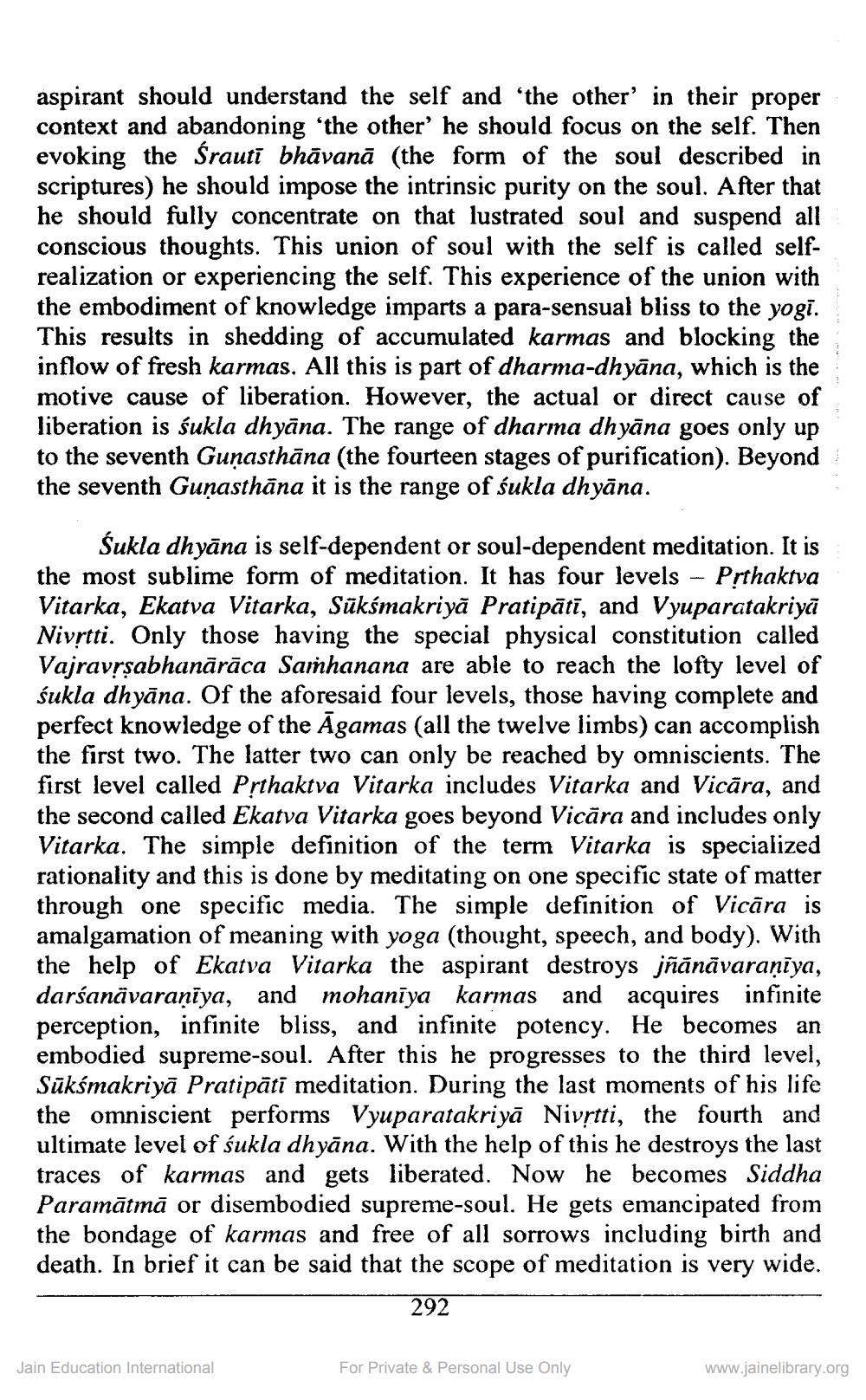________________
aspirant should understand the self and the other in their proper context and abandoning 'the other' he should focus on the self. Then evoking the Srauti bhāvanā (the form of the soul described in scriptures) he should impose the intrinsic purity on the soul. After that he should fully concentrate on that lustrated soul and suspend all conscious thoughts. This union of soul with the self is called selfrealization or experiencing the self. This experience of the union with the embodiment of knowledge imparts a para-sensual bliss to the yogi. This results in shedding of accumulated karmas and blocking the inflow of fresh karmas. All this is part of dharma-dhyāna, which is the motive cause of liberation. However, the actual or direct cause of liberation is śukla dhyāna. The range of dharma dhyāna goes only up to the seventh Guņasthāna (the fourteen stages of purification). Beyond the seventh Gunasthāna it is the range of śukla dhyāna.
Sukla dhyāna is self-dependent or soul-dependent meditation. It is the most sublime form of meditation. It has four levels - Prthaktva Vitarka, Ekatva Vitarka, Sūkśmakriyā Pratipātī, and Vyuparatakriya Nivrtti. Only those having the special physical constitution called Vajravrṣabhanārāca Samhanana are able to reach the lofty level of śukla dhyāna. Of the aforesaid four levels, those having complete and perfect knowledge of the Āgamas (all the twelve limbs) can accomplish the first two. The latter two can only be reached by omniscients. The first level called Prthaktva Vitarka includes Vitarka and Vicāra, and the second called Ekatva Vitarka goes beyond Vicāra and includes only Vitarka. The simple definition of the term Vitarka is specialized rationality and this is done by meditating on one specific state of matter through one specific media. The simple definition of Vicāra is amalgamation of meaning with yoga (thought, speech, and body). With the help of Ekatva Vitarka the aspirant destroys jñānāvaraņiya, darsanävaraṇīya, and mohanīya karmas and acquires infinite perception, infinite bliss, and infinite potency. He becomes an embodied supreme-soul. After this he progresses to the third level, Sūkśmakriyā Pratipātī meditation. During the last moments of his life the omniscient performs Vyuparatakriyā Nivetti, the fourth and ultimate level of śukla dhyāna. With the help of this he destroys the last traces of karmas and gets liberated. Now he becomes Siddha Paramātmā or disembodied supreme-soul. He gets emancipated from the bondage of karmas and free of all sorrows including birth and death. In brief it can be said that the scope of meditation is very wide.
292
Jain Education International
For Private & Personal Use Only
www.jainelibrary.org




